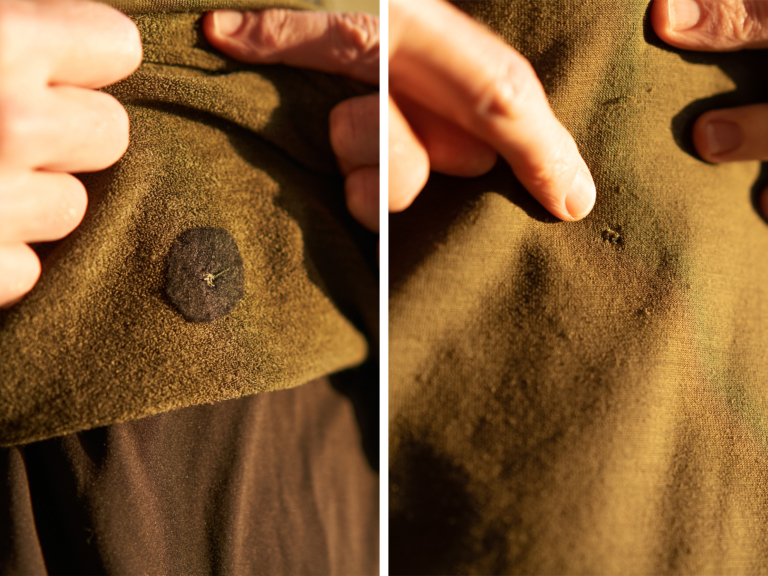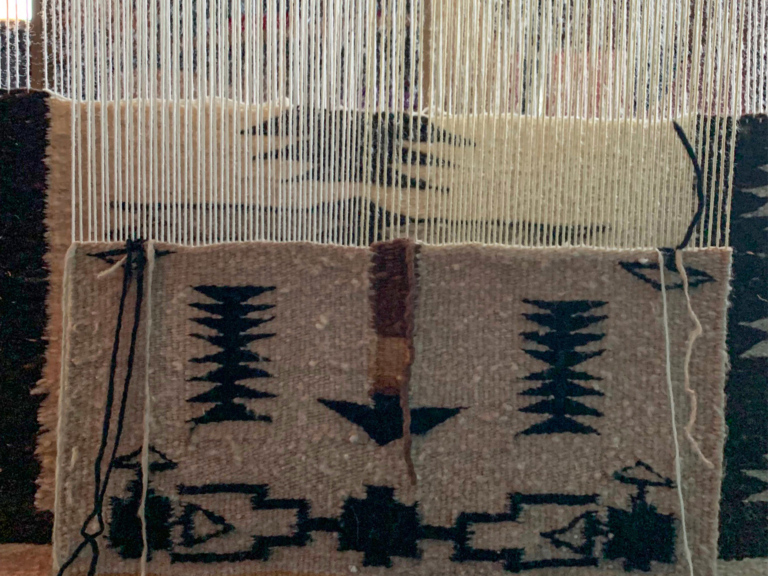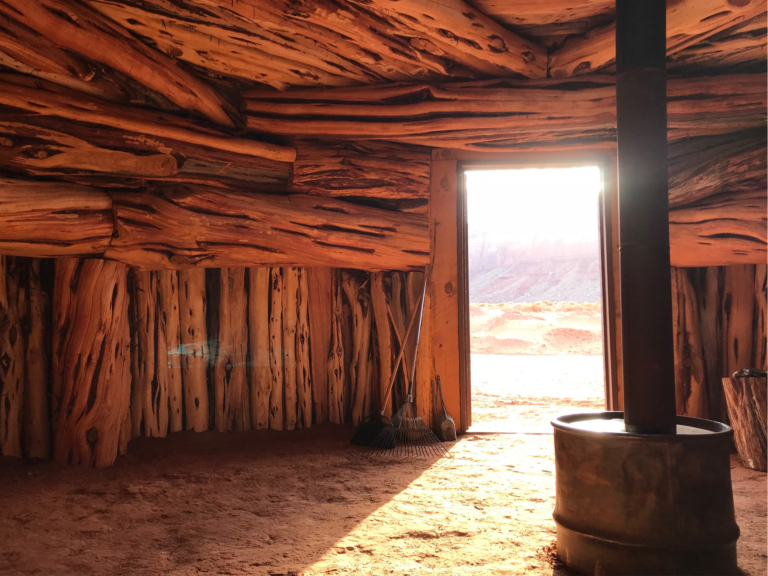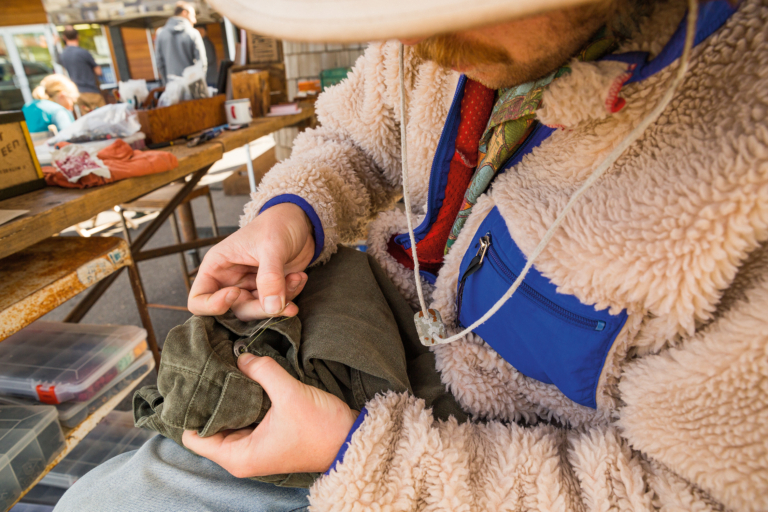https://www.patagonia.com/stories/perfectly-imperfect/story-132469.html
Perfectly Imperfect
Woody Woodburn / 4 Min Read
A writer’s favorite pullover revised.

Imagine a teenager looking in the mirror while getting ready for prom and seeing an eyesore pimple. That’s the kind of devastation I felt the other day when I put on my favorite pullover and spotted a small hole in the front.
Understand, I purchased this wool olive-green Patagonia pullover close to two decades ago and have babied it for the latter half of that period, trying to extend its life as long as possible. “Ol’ Green” has remained my casual tuxedo, my power suit for when confidence is needed, my good-luck charm and four-leaf clover. A quick scroll through photographs show Ol’ Green making more appearances than any other piece of clothing I own—for author talks and book signings, both my own and other writers’; birthday celebrations and holiday family gatherings; local happy hours with my very best friends; even in the hospital room to meet my newly born granddaughter.

Suddenly, nearly tragically, the new blemish promised to retire Ol’ Green from marquee billing. Still, I did not want the small hole to get stretched and pulled and torn into a larger one. “A stitch in time saves nine” after all, but alas, my skill with a needle and thread is limited to sewing a button back on a shirt. I asked my wife if she could fix it, but she declined, saying the emotional pressure was akin to a surgeon being asked to operate on a loved one.

So, I asked my dear Betsy Ross–like friend Kathy if she could perform her handiwork on Ol’ Green. Darned if her darning isn’t masterful—her needlework is nearly invisible. Key word: nearly. The jacket is perfectly imperfect, I thought, pulling it on in front of the mirror. Which led me to think about the Shakers who are renowned for their furniture design and craftsmanship, yet deliberately introduced a mistake into their work to show that humans should not aspire to the perfection of God. Flawed, they believed, can be ideal.

There’s the Diné tradition of purposely leaving a single thread hanging from the edges of their traditional handwoven blankets, which they call the spirit outlet. As Elouise Wilson, a Diné knowledge holder who graciously explained the tradition via video call, says, “Our things are not just things. They’re sacred, spiritual. There has to be an opening [in everything] because you cannot just trap yourself in a block.” Diné weavers also leave the doors to their hogans (weaving rooms) open while they work.


And in Japan, the traditional practice of kintsugi involves repairing broken ceramic goods with gold-colored glues and lacquer (urushi) to honor and extend the life of the object. “Breaking things is normal,” says Takuya Tsutsumi, a refiner of urushi at the Tsutsumi Asakichi Urushi shop in Japan. “Kintsugi originates in the 16th century, when a servant of emperor Toyotomi Hideyoshi dropped an important bowl during a tea ceremony. It broke into five pieces, and Toyotomi ordered it to be repaired with seams of gold. But today, many people have forgotten. It is a lovely feeling to rethink skill and technique and use our hands more.”

Just as the practice of kintsugi makes the object even more beautiful for having been broken, so too is it a lovely feeling to know that the life of my beloved pullover has been extended thanks to the skilled hands of a dear friend.
From now on, instead of saving Ol’ Green for red-letter days, I am going to embrace its repaired imperfection and wear it regularly. I not only plan to don Ol’ Green when I hold my soon-to-be-born second granddaughter for the first time, but also when she spits up on me and when I play soccer with, paint with, and roll in the leaves with her big sister. When future holes appear, I may ask Kathy to perform her seamstress wizardry with kintsugi-inspired gold thread instead of perfectly matched olive. Ol’ Green (and Gold) will be even more beautiful than ever.
Share on Pinterest Share on Twitter Share on LinkedIn Share on Email Share on Copy Link
Author Profile

Woody Woodburn
Woody is an award-winning newspaper columnist and the author of Wooden & Me. He has run at least 3 miles every day since July 7, 2003, and averages 11.2 daily miles. He lives, writes and runs in Ventura, California.
